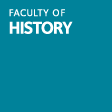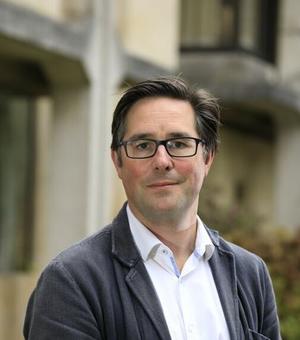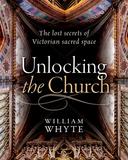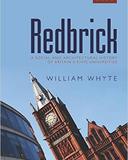Professor William Whyte
Like all historians, I am interested in people, but unlike many I am also equally preoccupied by things and places. I'm especially intrigued by what the serious investigation of the built and natural environment does to existing accounts of modern history. My research has consequently often focused on architecture, and I have a special interest in institutions like schools, universities, and churches.
My first book, Oxford Jackson: architecture, education, status, and style, 1835-1924 (OUP, 2006) explored the work of an influential university architect. My second, funded by a Philip Leverhulme Prize, was Redbrick: a social and architectural history of Britain's civic universities (OUP, 2015). My third, Unlocking the Church: the lost secrets of Victorian sacred space (OUP, 2017), grew out of my Hensley Henson Lectures. Now, as the final part of what's become a trilogy on university architecture, I am working on The University: a material history, for Harvard University Press. Along the way, I have edited or co-edited a dozen or so other books.
Current projects include the Oxford Illustrated History of England, for OUP, and the six-volume Cultural History of High Learning, which I am editing with Ning de Coninck-Smith (Aarhus) and Julia Horne (Sydney). I chair the editorial board of the Oxford Review of Education and sit on the board of the Oxford Historical Monographs series. I am currently serving as Senior Responsible Owner and Chair of Project Board for the Stephen A. Schwarzman Centre for the Humanities: the university's largest ever capital project, the result of the largest ever gift given to Oxford.
It is my immense good fortune to be involved in a large number of organisations outside the University. I am chair of the Oxford Preservation Trust, the Oxford Historical Society, and the Victoria County History of Oxfordshire. I am a Trustee of English Heritage and Chair the Blue Plaques Panel. I am also a member of the Fabric Commission of Westminster Abbey, the Heritage Committee of the British Academy, the Oxford Diocesan Advisory Committee, and serve on the International Commission for the History of Universities/Commission internationale pour l'histoire des universités.
Research Interests
As professor of social and architectural history I am very glad to discuss graduate supervision with anyone whose interests fall within these fields. In the past, I have been lucky enough to work with a score or so of doctoral students on science in the nineteenth century, theology in the twentieth, and architectural history over both periods. Recent theses include George Entwistle on inter-war housing, Elena Porter on the political economy of country houses, and Anna Clark on women’s portraits in early modern colleges.
Current DPhil projects include work on architectural thought in eighteenth-century England, urban life and identity in the early nineteenth-century Adriatic, cemeteries in early nineteenth-century England, church building in mid-nineteenth-century Canada, Anglican churches in nineteenth-century Italy, architectural museums in Victorian London, country house guides in the twentieth century, and the conversion of chapels and barracks in contemporary Britain.
To get a sense of the sort of work I have supervised, it is worth looking at the publications of previous doctoral students. These include Daniel Inman, whose thesis was published as The Making of Modern British Theology: God and the Academy at Oxford, 1833-1939 (2014), Edward Gillin, whose thesis became The Victorian Palace of Science: Scientific Knowledge and the Building of the Houses of Parliament (2017), Matthew Andrews, whose thesis became Universities in the Age of Reform, 1800–1870: Durham, London and King’s College (2018), and Sam Brewitt-Taylor, whose thesis was published as Christian Radicalism in the Church of England and the Invention of the British Sixties (2018). More recent examples include Graham Harding’s Champagne in Britain, 1800-1914: How the British Transformed a French Luxury (2021) and Neal Shasore’s Designs on Democracy: architecture and the public in Interwar London (2022).
I encourage my students to publish whilst working on the DPhil, and they have been very successful in so doing. Recent publications include Lily Crowther, ‘Innovation and Revivalism: Powell & Sons’ Opus Sectile Mosaic’, Journal of Design History (2023), Lisa Hirst, ‘A Rather Messy Approach: Understanding the Queen’s Hotel, Birmingham, 1837–1857’, Journal of Design History (2020), and Horatio Joyce, ‘Disharmony in the Clubhouse: Exclusion, Identity, and the Making of McKim, Mead & White’s Harmonie Club of New York City’, Journal of the Society of Architectural Historians (2019).
College website: https://www.sjc.ox.ac.uk/discover/people/reverend-professor-william-whyte/
Twitter/X: @william_whyte






